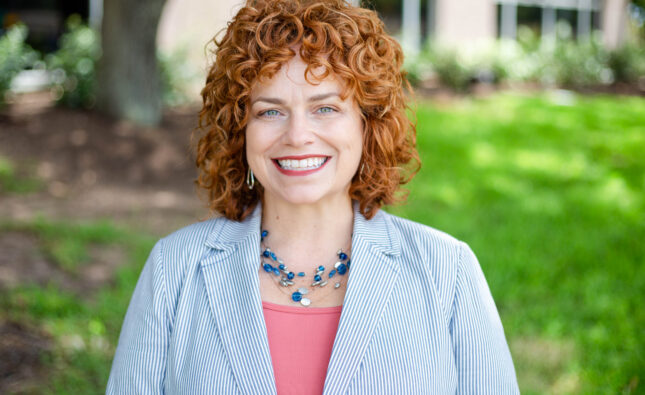by Hannah Gourgey
In the blog last Wednesday, I described a critical creative tension every backbone organization must face in addressing systemic change in education through collective impact: partnering versus pushing. These tensions arise from the very nature of the complex problems we are seeking to address. As FSG’s Kania and Kramer note in their inaugural article on collective impact: complexity arises because the conditions shaping social justice issues such as education are so varied and so deeply interdependent. It is this interdependence that gives rise to the creative tensions we see in the work of collective impact.
In this blog, I will share my experience with two such tensions that exemplify interdependence: inclusiveness versus expediency and balancing organizational versus community goals.
Inclusiveness versus Expediency
One reason why it is so important to embrace this tension is because finding the correct balance can very well mean the difference between creating an unsustainable program and actively engaging in systems change. In my work as Blueprint Director (Central Texas’ Strategic Plan for Education), I’ve witnessed this tension several times. One example occurred during strategic planning for college access and success involving dozens of providers and stakeholders in a community. We ask ourselves, “Do you take the time to involve all of them? Or move forward with a select few? How do you balance representation versus momentum?”
There is no set recipe, but one lesson learned is that the important “ingredient” is knowing your partners and their political dynamics both past and present. In the case of our college access and success team, I focused so greatly on inclusion that the process took close to 12 months and we lost a great deal of momentum. Leaders forgot what the end goal was and would send proxies who were not abreast of the initiative or empowered to make decisions for the organization. So, I rebooted. We invited leadership of ONLY the core (systems critical) organizations who met for half a day to discuss the goal and barriers to reaching the goal. In that meeting, E3 shared the results of their asset inventory (based on the drawn-out strategic plan) which enabled us to plan from a position of our strengths while attending to the barriers. The leadership team developed a charter around this new plan within three weeks of this half-day retreat. We identified a collaborative grant opportunity that would enable us to operationalize the charter and scale a selection of regional assets based on the priorities of the strategic plan.
Another example addresses broader community engagement. In 2008, E3 worked with the community to create The Blueprint for Educational ChangeTM. It started with a series of community dialogues in 2007 extensively involving many hundreds of diverse stakeholders, as well as a comprehensive analysis of Central Texas education trends and outcomes. We then held a much more exclusive Summit of regional leaders in business, education and the community to help prioritize goals based on the findings from our dialogues and research. The result is that the four goals defined 5 years ago this month have become the common agenda and the lens through which our business, education and community partners filter new community-wide initiatives.
Organizational Interests versus Community Goals
This process works well in most cases, but there are times when a second tension hinders broader inclusion: Organizational versus Community Goals. As an independent non-profit as well as backbone organization, E3 Alliance experiences this tension first hand. It is most overt as communities develop resources and funding to undertake ambitious collaborations.
We have learned that it is a balancing act.

The strategies we use to tip the scale in favor of community goals are:
- Employing strategic planning to accommodate enlightened self interest on the part of stakeholders and look for early wins that can build confidence in the process
- Using aggregated data and research findings to frame the conversation beyond organizational interests
- Working directly with funders to encourage authentic partnership
- For larger agencies, targeting multiple levels for buy in (often starting with those on the ground)
- Undertaking both one-on-one and group planning sessions to uncover reasons for reluctance
- Engaging credible third parties to help uncover the reasons
- Publicly recognizing partners willing to take risks
Both these tensions hinge around the issue of trust. People who trust one another will work together more readily. Much more importantly for the purposes of Collective Impact, they will risk together more readily. Setting the foundation of that trust is the pre-work of the backbone organization to enable the move to collaborative action. At E3 Alliance, I have found that the two most critical responsibilities to facilitating collaborative action, then, are strong, continuous communication and early, concrete results.
We know that as a backbone we must be a continuous learning organization. In that spirit, I’d like to know what your experience has been with these or other creative tensions that you have encountered while implementing collective impact.
About E3 Alliance: E3 Alliance is a regional, data-driven education collaborative based in Austin, Texas. We are building the strongest educational pipeline in the country to drive regional economic prosperity. Founded in 2006, E3 Alliance acts as a catalyst for change, working to break-down barriers and build better alignment across the education continuum. Our name tells our story: Education Equals Economics, we believe that only through greater education achievement for our current and future generations of children, can Central Texas realize economic prosperity and a high quality of life for our community. Such education achievement requires systemic change from cradle to career, and that is our commitment to our community. For more information, please visit our website at www.e3alliance.org.
This blog also appeared on the FSG website. Learn more about FSG’s approach to creating large-scale change.

Dr. Hannah Gourgey, oversees collaborative work around The Blueprint for Educational Change, Central Texas’ strategic plan to build the strongest educational pipeline in the country.







